Colorful World Festival Traditions That Feel Authentic
Colorful World Festival Traditions That Feel Authentic
Festivals around the world are vibrant, lively celebrations that showcase the rich cultural heritage of communities. From traditional dances to colorful parades, each festival offers a unique window into the customs and beliefs of its people. In this article, we will explore various colorful festivals around the globe and highlight the traditions that make each one feel authentic.
1. Holi: The Festival of Colors
Holi, often referred to as the Festival of Colors, is a spring festival celebrated primarily in India and Nepal. It symbolizes the victory of good over evil and the arrival of spring. During this festival, participants throw colored powders and water at each other, creating a kaleidoscope of hues that fill the air.
The celebration starts with a bonfire on the eve of Holi, known as Holika Dahan, which represents the burning of evil spirits. On the main day, people gather to dance, sing, and share festive foods, embodying community spirit and joy.
2. Carnival: A Burst of Joy in Brazil
Carnival in Brazil is a grand festival filled with parades, music, and dazzling costumes. This event takes place before Lent and is considered one of the biggest street parties in the world. Samba schools prepare year-round for this celebration, creating intricate floats and performing spectacular dance routines.
The authenticity of Carnival lies in its deep roots within Afro-Brazilian culture. The blending of different musical styles, such as Samba and Pagode, brings the community together, making it a truly immersive experience for both locals and visitors.
3. La Tomatina: The Tomato Throwing Festival
La Tomatina, held in Buñol, Spain, is a unique festival that involves throwing tomatoes at each other. This fun and messy celebration takes place on the last Wednesday of August and attracts thousands of participants from around the world. What started as a local food fight has transformed into an iconic event, fostering a strong sense of community and joy.
While La Tomatina may seem frivolous, it has evolved into a tribute to the local agricultural traditions and celebrates the harvest. The festival’s authenticity lies within the laughter and camaraderie shared among participants.
4. Diwali: The Festival of Lights
Diwali, known as the Festival of Lights, is celebrated by millions of people across India and other countries. It signifies the victory of light over darkness and knowledge over ignorance. Homes are decorated with small oil lamps, known as diyas, and colorful rangoli designs made from flowers, rice, or colored powder.
The essence of Diwali involves not only the visual spectacle but also the practice of sharing sweets and feasting with loved ones. The ignition of skies with fireworks and the lit lamps create a warm, inviting atmosphere that resonates authenticity and love.
5. Oktoberfest: A Celebration of Bavarian Tradition
Oktoberfest, held annually in Munich, Germany, is the world’s largest Volksfest, combining a massive beer festival with a traveling funfair. The festival runs for 16 to 18 days and attracts millions of visitors who come to enjoy traditional Bavarian food, music, and, of course, beer brewed according to the Reinheitsgebot, or German Beer Purity Law.
The traditions of Oktoberfest reflect the rich Bavarian culture, from the music of oompah bands to traditional folk costumes. It is a vibrant celebration that embodies the spirit of community and Festlichkeit (festivity).
6. Thanksgiving: A Time for Gratitude
Though it may not be as colorful as other festivals, Thanksgiving in the United States is rich in tradition and authenticity. Celebrated on the fourth Thursday in November, it is a time for families to come together, share a meal, and reflect on what they are thankful for.
The traditional Thanksgiving dinner often includes roast turkey, stuffing, and pumpkin pie, stemming from the very first harvest feast shared between the Pilgrims and Native Americans. The blending of diverse culinary traditions contributes to the festival’s authentic and inclusive spirit.
7. Chinese New Year: A Vibrant Celebration
Chinese New Year, also known as Lunar New Year, is celebrated by millions around the world. The festival usually lasts for 15 days and marks the beginning of the lunar calendar. It is characterized by family reunions, dragon dances, and the giving of red envelopes filled with money.
The authenticity of Chinese New Year lies in its deep cultural significance. Each day of the festival has its own set of customs, reflecting themes of luck, prosperity, and family unity, all while being surrounded by vibrant decorations that illustrate traditional Chinese art.
8. Día de los Muertos: Honoring the Ancestors
Día de los Muertos, or the Day of the Dead, is celebrated in Mexico and acknowledges the spirits of the deceased. It combines indigenous traditions with Catholic beliefs. Festivities include building altars (ofrendas) adorned with photos, flowers, and favorite foods of the departed.
The colors and symbols used during Día de los Muertos reflect the rich heritage and respect for the ancestors. This festival provides a genuine connection with the past, allowing families to remember and celebrate their loved ones.
9. Midsummer: Celebrating the Summer Solstice
Midsummer festivals vary globally but commonly celebrate the summer solstice with vibrant activities. In Sweden, for instance, people celebrate by raising a maypole adorned with flowers and dancing around it. Traditional food, such as herring and fresh strawberries, is enjoyed with family and friends.
The authenticity of Midsummer lies in its connection to nature and community, making it a celebration of life, growth, and gratitude.
10. Gion Matsuri: A Month-long Festival in Japan
The Gion Matsuri in Kyoto is one of Japan’s most famous festivals, held throughout July. The highlight is the grand parade of floats, known as Yamaboko Junko, which takes place on July 17. The floats are extremely intricate and symbolize the cultural heritage of the city.
Gion Matsuri showcases the spirit of community collaboration and reverence for tradition. Participants wear traditional clothing, engage in rituals, and prepare delicacies, making the festival a vibrant tapestry of Japanese culture.
Conclusion
In conclusion, colorful festivals around the world present a captivating glimpse into the diverse cultural tapestries of humanity. These traditions not only celebrate the beauty of life but also foster a sense of belonging and authenticity. Whether it’s through vibrant colors, rhythmic dances, or culinary delights, each festival weaves together stories of history and community. Remember to experience at least one of these brilliant festivals, as they offer the perfect chance to witness authentic cultural expressions.
Festivals around the world are vibrant, lively celebrations that showcase the rich cultural heritage of communities.
The essence of Diwali involves not only the visual spectacle but also the practice of sharing sweets and feasting with loved ones.


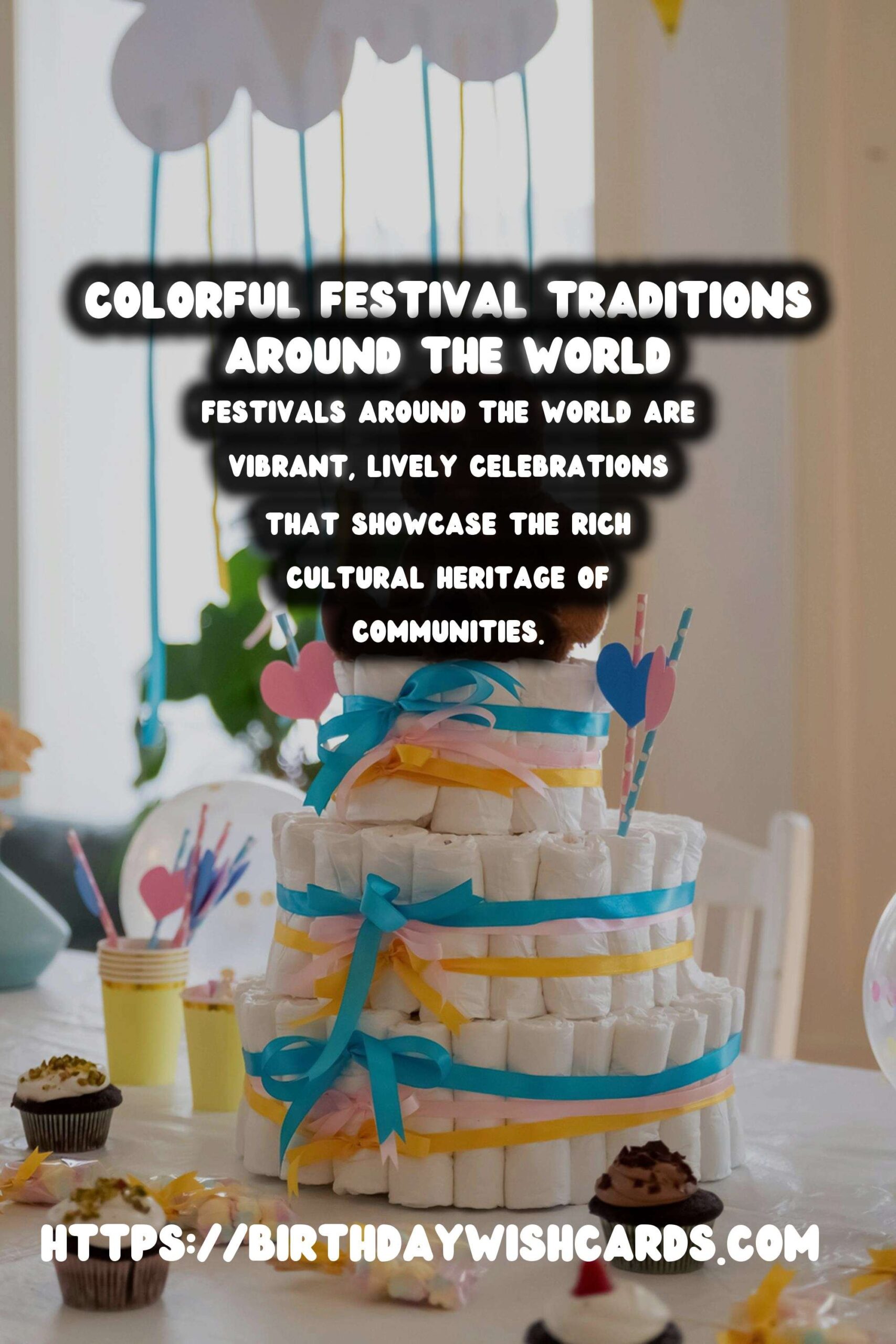

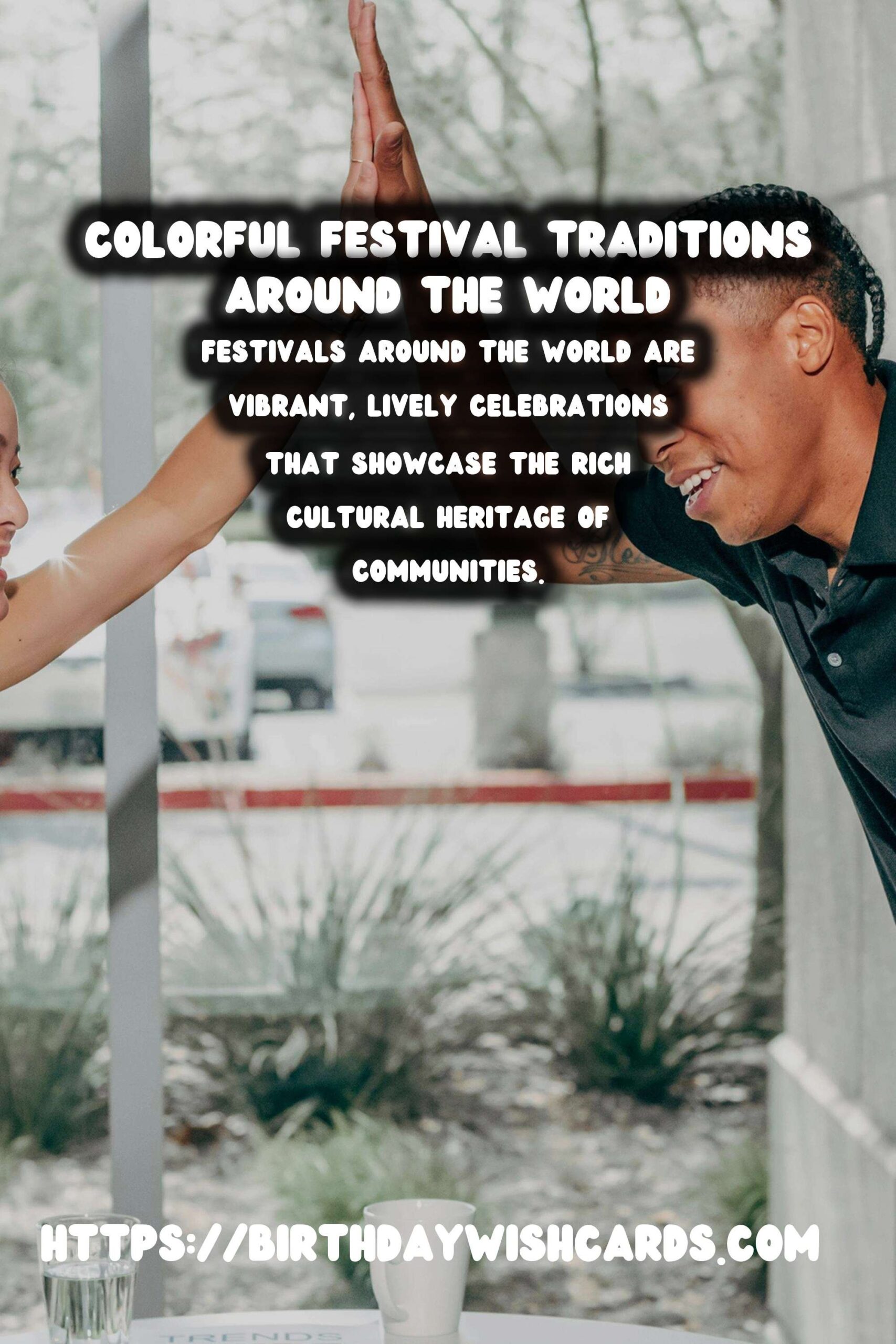

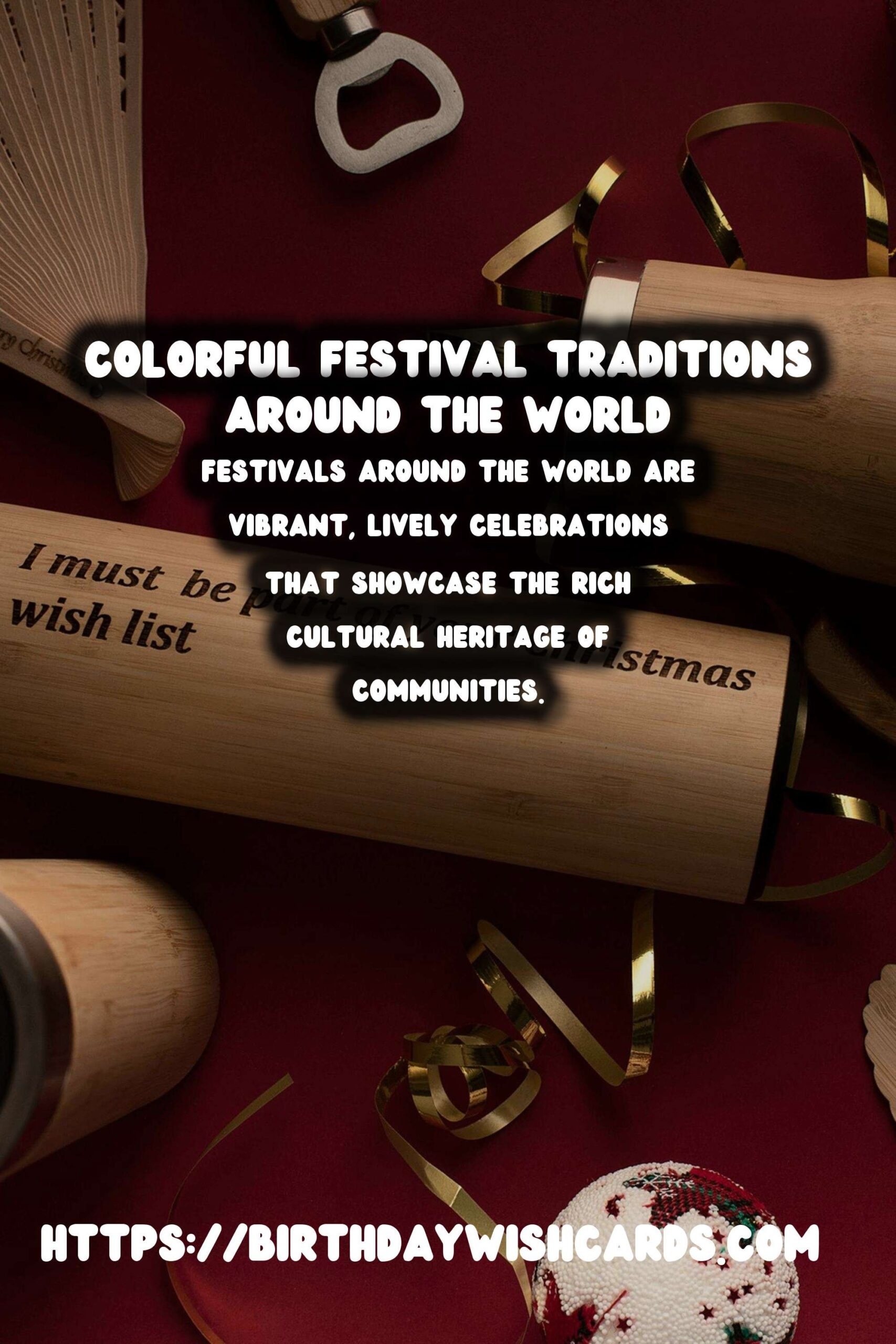

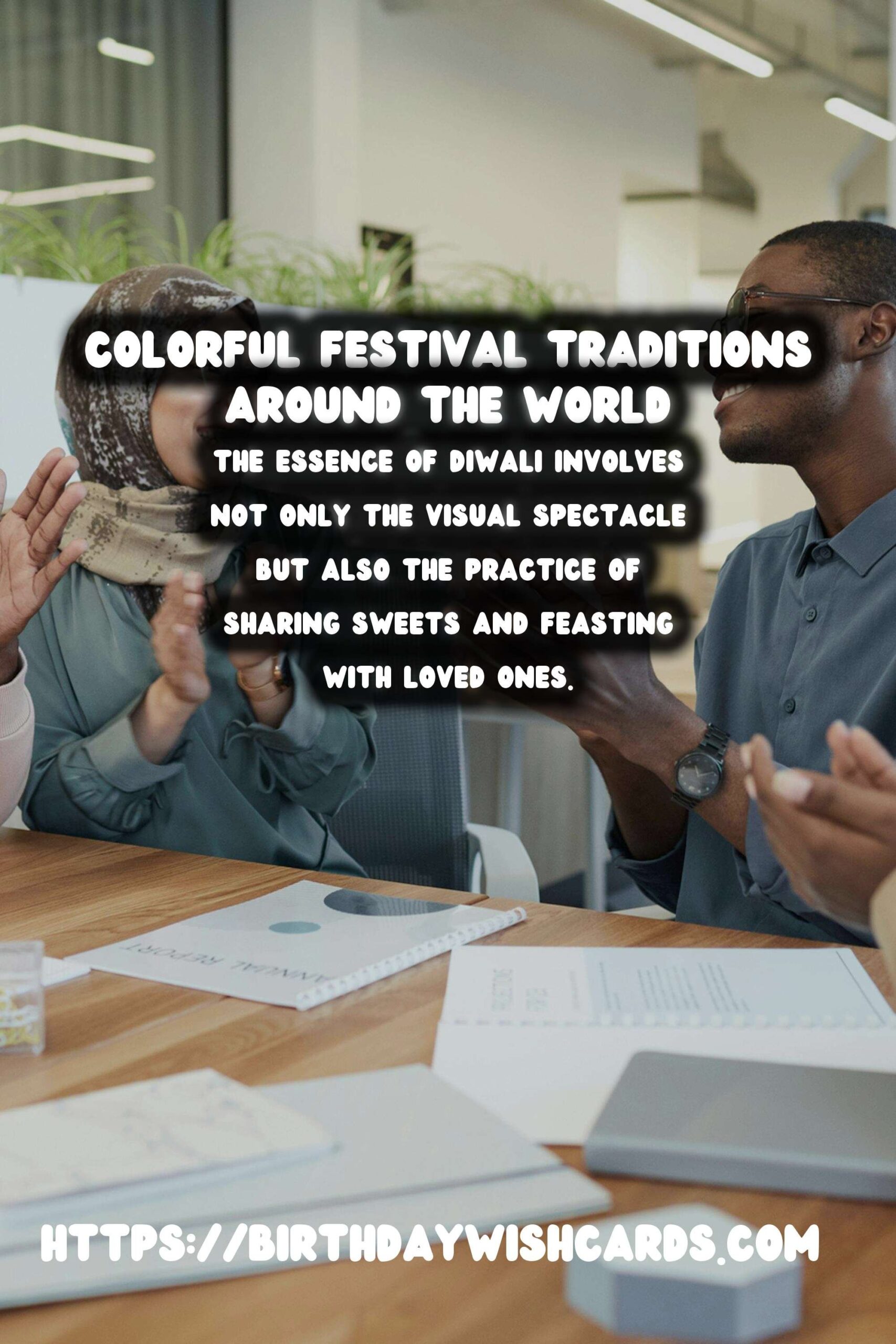
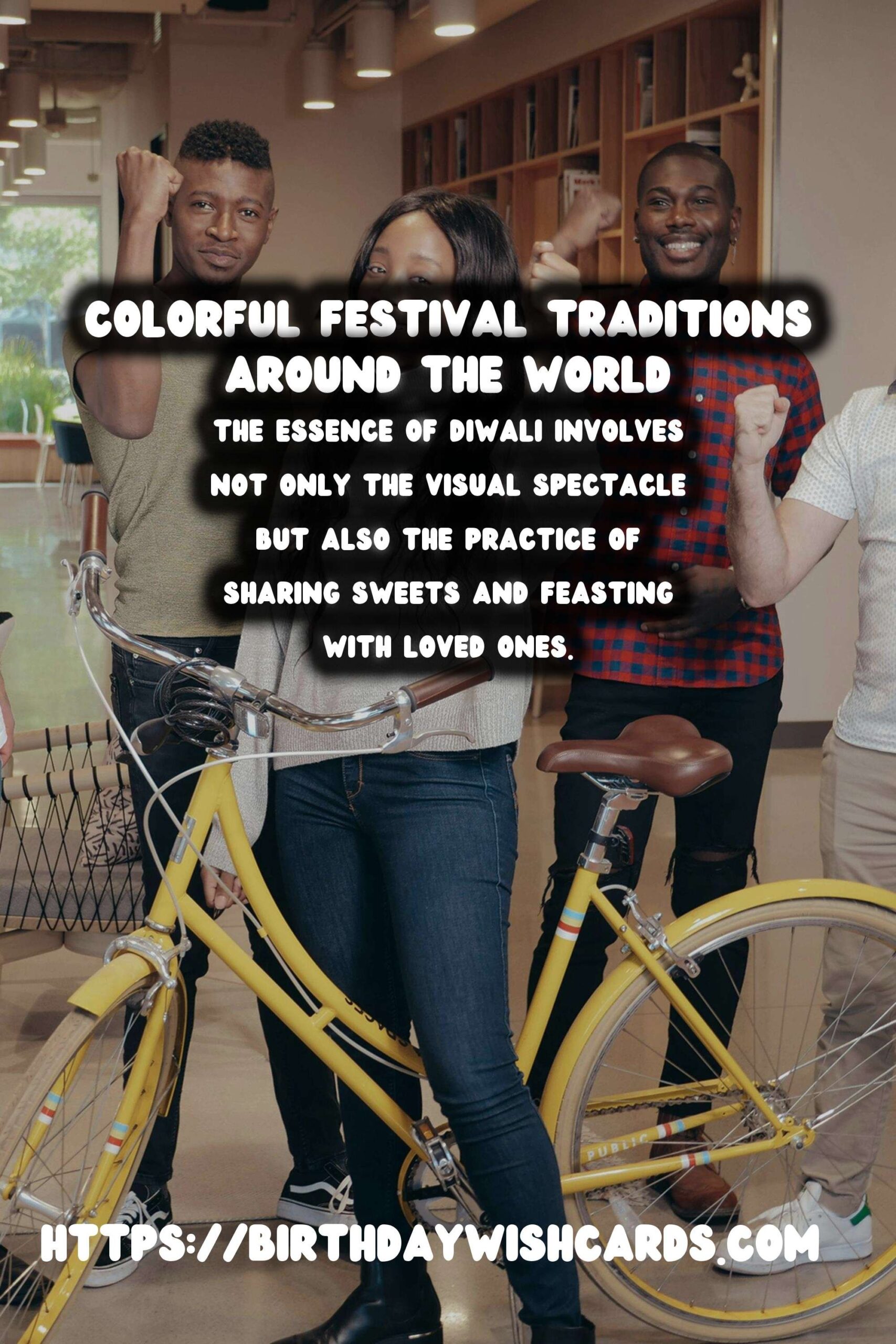
#festivals #culturaltraditions






